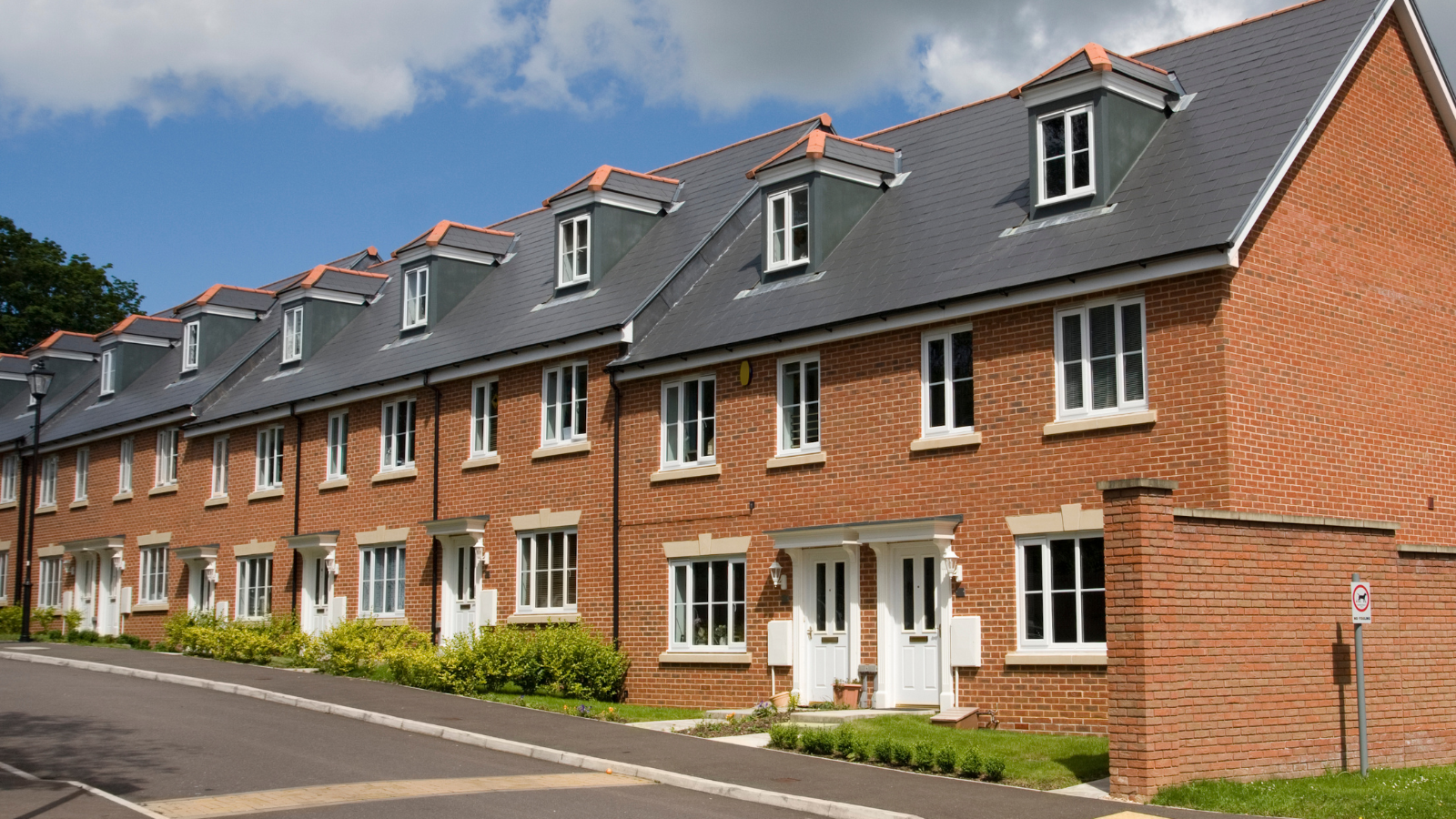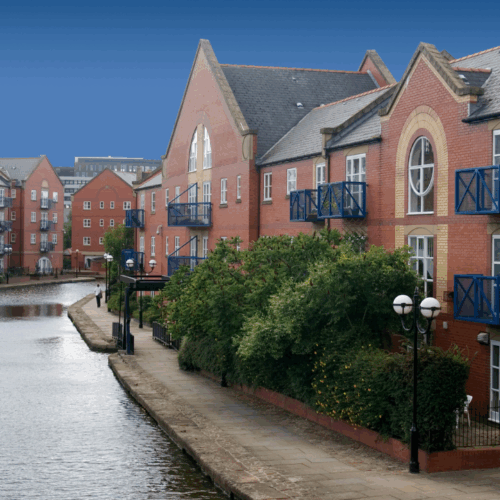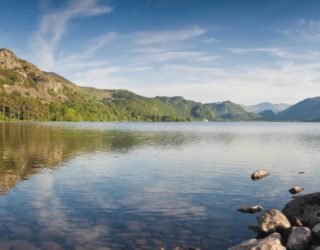In response to the UK’s housing crisis, an influx of new builds are being developed across the country. However, with stories of new developments being built in rural towns and villages, local residents continue to voice concerns about the impact these sites will have on wildlife and the environment.
A village in Sussex is set to welcome 190 new homes; however, residents of the village sent more than 1,700 letters objecting to the plans, and have set up a campaign group to raise money to contest the appeal.
While concerns over wildlife and the environment are valid, it’s possible that new builds can support local ecosystems through considerate planning and creating ecological value on-site, benefiting the environment and fulfilling the need for new housing.
Creating ecological value means to deliver a ‘net gain’ for habitats and associated species compared to the pre-development situation. This is called Biodiversity Net Gain (BNG). BNG is a mandatory requirement in England for most new developments to ensure they leave natural habitats in a measurably better condition than before, aiming for at least a 10% improvement.
How to create ecological value in housing developments
For house builders working towards creating a biodiverse development, several actions can be taken to mitigate wildlife and environmental loss.
Get a preliminary ecological assessment (PEA)
Firstly, it’s important to understand a site’s baseline biodiversity. Developers should carry out a preliminary ecological assessment (PEA) that includes a habitat condition assessment. This allows the site’s baseline biodiversity value to be calculated, and to make a broader assessment of ecological constraints and opportunities, and any further assessments which may be needed to inform the planning application.
If you have any questions or would like to arrange a Preliminary Ecological Appraisal, speak to one of our specialists.
Partner with an ecologist for support and guidance
Working closely with an ecologist to optioneer the scheme will provide house builders with guidance on the potential impacts of different site layouts, enabling them to identify layouts with the lowest ecological impact, and associated costs and / or those that yield the best level of biodiversity gain post-development.
Early engagement with an ecologist is crucial in housing projects to avoid significant delays, comply with mandatory legislation, such as the BNG, and ensure ecological surveys can be undertaken within strict survey windows whilst aligning to project timelines.
Partnering with an ecologist can also reduce costs for developers in the long run. By identifying and addressing potential ecological issues upfront, developers can avoid unnecessary expenditure and manage financial risks related to ecology and BNG more effectively. Visit our ecology services page to find out more about how we can help.
Plant native plants and trees
Native plants and trees that are consistent with species in the wider environment will offer greater biodiversity value than species that are out of context with the wider environment or non-native.
In terms of which native plants and trees to choose, it depends on the local ecological conditions and the habitats that already exist on site. Enhancing existing habitats to achieve better condition or avoiding the removal of habitats in good condition is generally preferable to their removal and recreation.
In developing an enhancement scheme for a site, site conditions, both existing and those likely to occur in the future, should be accounted for. For example, on a large planting scheme, we took over habitat management from a previous supplier due to high levels of tree planting failures. With our ecologist’s recommendations at Thomson, we replanted the area with water-tolerant trees like Alder and Willow due to the ground being subject to frequent waterlogging.
Test the on-site soil
Ground investigation and testing of soil can be integral for housing developments, helping to assess ecology by ensuring site stability and structural integrity, as well as identifying risks such as reactivity and contamination, while protecting buildings and the surrounding residents. However, such testing can also be important for site biodiversity. It protects the environment by helping consultants make informed decisions and recommendations about ecological enhancements that align with surrounding ecological conditions and are compatible with site-specific ground conditions.
Testing the soils on site is important to ensure that the soil structure and chemistry are compatible with the native plants and trees proposed. For example, sites with high nutrient loads would be incompatible with some types of meadow planting, which generally require nutrient-poor conditions to establish.
Flood resilience from green and blue infrastructure
Blue and green infrastructure enhances flood resilience by replicating natural water processes to manage rainwater, alleviate pressure on traditional drainage systems, and retain water where it falls. Blue infrastructure encompasses water bodies, including ponds and wetlands, while green infrastructure comprises features such as rain gardens, green roofs, riparian planting and street trees. Working together, they slowly absorb and delay the discharge of rainfall, reducing flood depth and duration and help protect urban areas from overwhelming weather events.
Urban cooling
Urban cooling in housing developments is beneficial because it reduces the Urban Heat Island (UHI) effect, resulting in cooler homes and more comfortable living environments. This can be achieved through green infrastructure, such as green roofs, green walls, and trees, which provide shade and cooling through the process of evapotranspiration. Benefits include lower energy consumption for air conditioning, improved air quality, enhanced public health, and can support increased property values.
Common mistakes when enhancing biodiversity
Choosing to work with an ecologist from the early stages will help developers avoid making common mistakes when trying to enhance biodiversity net gain. These common mistakes include:
- Not conducting baseline assessments
- Underestimating the importance of long-term management
- Failing to secure land ownership and legal agreements
- Treating biodiversity as an afterthought rather than a core design principle
Also, look at sites as early as feasibility planning. Conducting rapid assessments of development site options can aid in selecting sites with the lowest existing biodiversity value, thereby identifying those that can most readily generate a post-development gain at the lowest costs.
These errors can lead to failed projects, wasted resources, and a lack of positive outcomes for wildlife and the environment.
Mitigation hierarchy
An ecologist will often follow the mitigation hierarchy, ensuring that common mistakes like this are avoided. The main stages of this hierarchy include:
- Avoidance: The first step is to avoid causing harm in the first place. This means planning projects in a way that prevents damage to important ecosystems, species, or habitats. For example, an access road could be built around a wetland habitat instead of through it.
- Minimisation: If some impact is unavoidable, the next step is to reduce the level of harm as much as possible. This could include using quieter equipment to minimise disturbance to sensitive wildlife receptors, limiting construction during breeding seasons, or implementing erosion controls to protect nearby rivers.
- Rehabilitation/restoration: After minimising harm, the next step is to repair or restore areas that were disturbed. This may involve replanting native vegetation or making targeted habitat enhancements to allow wildlife to return and thrive.
- Offset/compensation: When damage cannot be fully avoided or restored, compensation is used to make up for the loss. This often means protecting or creating habitats elsewhere to offset the unavoidable impacts of development. For example, if part of a of woodland copse is to be lost, another area of woodland might be protected or restored to provide enhanced ecological benefits.
Long-term habitat management
Consider collaborating with your chosen ecologist to develop a long-term management and monitoring plan for habitats. These plans will be required as part of BNG obligations. Time upfront establishing management regimes will help ensure that habitats reach the target condition. Ongoing management by a specialist ecological contractor will be beneficial in bringing management actions to reality and maximising the biodiversity benefit of onsite habitats. Visit our habitat services page to find out more.
How can enhancing biodiversity also reduce ongoing site maintenance costs?
Managing biodiversity often requires less input than amenity management. For example, amenity management may require four or more cuts per year to maintain grass length at 50 mm. This may not be desirable for biodiversity. Grasslands managed for biodiversity may require less frequent management intervention, offering a direct saving on amenity mowing costs.
Amenity planting often utilises non-native species, which require considerable maintenance, including weeding, watering, mulching, and frequent pruning. Use of native species in more informal planting arrangements (such as a wildflower area) does not require the same management inputs as they are native and tolerant to local climatic conditions.
Does biodiversity influence property value or buyer interest?
A well-designed biodiversity enhancement scheme, properly managed, is a valuable feature for any development. The benefit of green space to individual wellbeing cannot be underestimated.
ONS data suggests properties with access to green space command a higher price, and urban green spaces raise nearby house prices by an average of £2,500.
There is also a significant opportunity for developers to incorporate biodiversity enhancements into their marketing materials for developments. Developers will invest time, effort, and money in biodiversity enhancement initiatives that deliver positive benefits for nature. They should be telling this story to prospective purchasers and residents.
If you’re a developer looking to partner with an ecologist on your upcoming site, contact our team to discuss your requirements.











